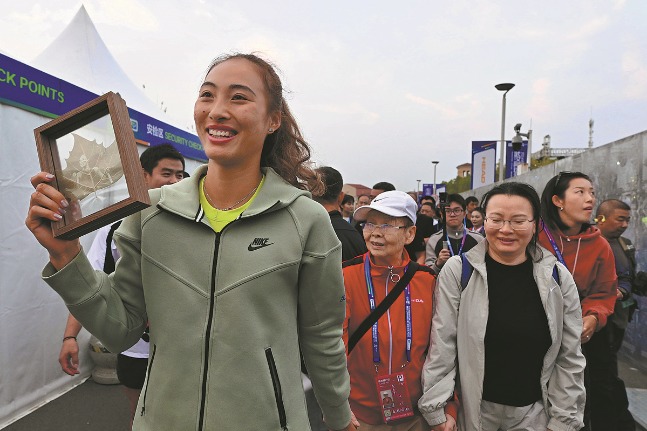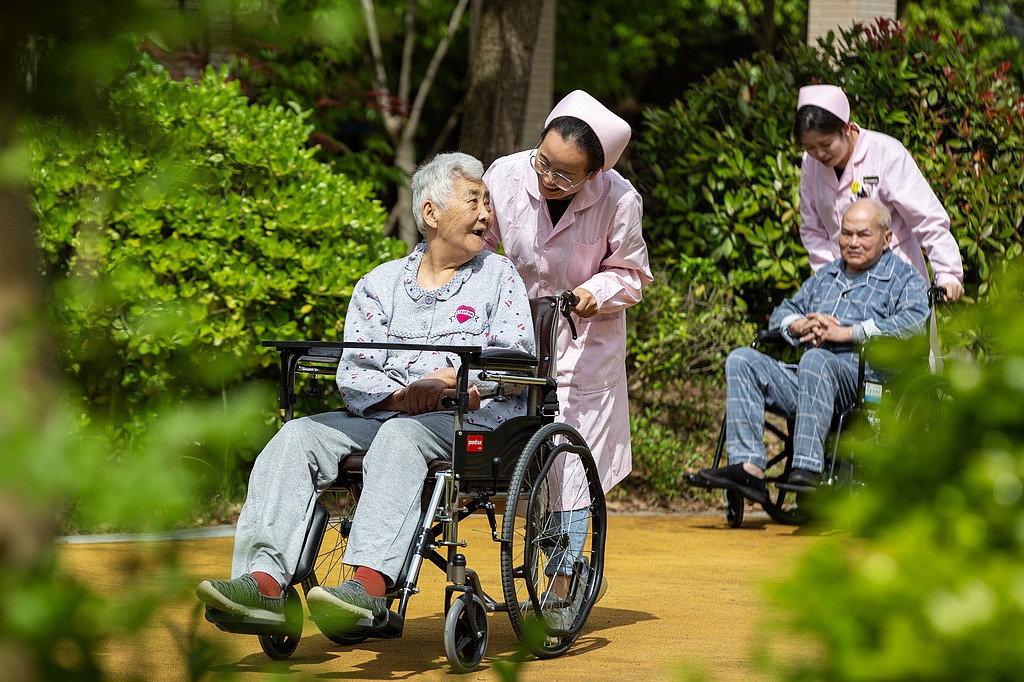Building a physical fitness and health promotion platform to boost new cooperation in China-ASEAN sports technology
By Cao Jingwei | chinadaily.com.cn | Updated: 2024-10-11 18:33
The year 2024 marks the China-ASEAN Year of People-to-People Exchanges. China and ASEAN, connected by mountains and rivers, share a deep bond across the seas and a common destiny. Over the millennia, the ongoing exchange of ships and merchants has shaped the unique and inclusive character of Asian cultures, fostering shared values of openness, tolerance and peace among the people of Asia. This enduring connection has inspired China and ASEAN to join hands in pursuing a shared path toward modernization.
National physical fitness is a vital component of a country's comprehensive strength and a key indicator of societal progress. Enhancing national physical fitness through exercise to promote high-level health has gained global recognition. Recently, the 2nd China-ASEAN International Conference on Physical Fitness and Health Promotion was held in Xi'an. The conference focused on research in physical fitness and health promotion, aiming to promote physical health among people in China and ASEAN countries, foster sports technology exchanges, and elevate China's influence in global sports science. Since 2023, at the initiative of the China-ASEAN Sports Leaders' Meeting, China and ASEAN countries have actively engaged in communication and collaboration in physical fitness and health promotion. Leveraging the international conference as a platform, they have established a collaborative framework for research on physical fitness across China and ASEAN nations.
National physical fitness in China having improved steadily
China has long prioritized national physical fitness. Over the past half-century, especially since the reform and opening-up period, with strong attention from national leaders and dedicated efforts across generations in sports, health and education, China has progressively enhanced its policies on physical fitness surveillance. These developments have established a solid policy foundation for supporting national health in a more effective, comprehensive and scientific manner. The revised Law of the People's Republic of China on Sports mandates "national physical fitness surveillance", while the State Council's National Fitness Plan, released every five years, offers strategic guidance for this surveillance.
Over the past 20 years, China has established a four-tier surveillance network for national physical fitness, consisting of a National Physical Fitness Surveillance Center, provincial centers, city-level centers, and district/county stations. This framework has gradually developed into a distinctively Chinese surveillance system. In recent years, as physical fitness surveillance efforts have expanded, citizens have gained a deeper understanding of fitness and health. Data shows a steady increase in public interest in physical exercise, with 37.2% of residents regularly participating in sports in 2020, and 90.4% at qualified level or above. The overall physical fitness in China has improves steadily.
Fostering a closer "community with a shared health future"
The author has found that in recent years, the ASEAN countries have, to varying extents, undertaken national physical fitness surveillance initiatives, showing a two-phase development pattern.
The first phase (1982-2016) saw ASEAN countries gradually developed fitness testing programs tailored to their specific contexts, resulting in varied progress across the region. In this phase, only Singapore, Indonesia, Malaysia, and the Philippines had established relatively systematic frameworks for fitness testing. For example, in January 1982, Singapore introduced the National Physical Fitness Award to promote comprehensive national fitness surveillance. In 1984, Indonesia introduced physical fitness indicators to assess youth fitness levels. In 2008, Malaysia's Ministry of Education implemented the SEGAK physical fitness test for students, assessing 4th and 5th graders twice annually to inform school physical education plans. In 2015, the Philippines released a fitness testing manual, providing data to improve youth fitness levels.
The second phase (2017-present) marked a shift toward unified development. During this period, ASEAN countries established the ASEAN Physical Fitness Indicator (APFI), standardizing fitness tests across age groups and implementing a cohesive testing protocol. In 2017, the first APFI Special Meeting was held, followed by additional meetings in 2018, 2019, 2022 and 2023. The release of the ASEAN Physical Fitness Joint Report has been designated as a key component of the ASEAN sports agenda. These meetings represented significant milestones in the systematization and standardization of fitness testing across ASEAN. They transformed the exercise indicators into physical fitness indicators, established the ASEAN National Physical Fitness Surveillance Indicator System, and created a unified set of age-specific testing criteria, sample size calculations, and testing procedures. More importantly, the meetings launched data collection initiatives for fitness testing, ultimately developing population-based testing indicators and relevant protocols for ASEAN.
Leveraging ASEAN international organizations, member countries have gradually strengthened their cooperation in national fitness surveillance. The evolution of fitness surveillance systems is closely linked to national development, while the internationalization of these systems has fostered increasingly close exchanges and cooperation among countries. Joint fitness surveillance initiatives have also injected new momentum into advancing sports technology collaboration, promoting cultural exchanges, and building a more cohesive "community of shared health future".
Strengthening cooperation in health promotion through physical fitness
China and ASEAN countries have broad prospects for collaboration in physical fitness and health promotion, which aligns with their shared vision for health. This cooperation can serve as a model for international health promotion across regions, offering valuable experience and best practices on a global scale.
The China-ASEAN Community with a Shared Future has been established for over 30 years, now standing at a historical juncture poised for continuity and innovation. Clarifying the historical development of fitness surveillance in ASEAN countries will enhance the exchange of successful practices between China and ASEAN, fostering an integrated approach to fitness surveillance. Looking forward, China and ASEAN countries should strengthen collaboration in fitness surveillance, prioritizing the establishment of unified fitness surveillance indicators and evaluation systems to enhance cooperation in national fitness initiatives. Additionally, joint international comparative studies on national fitness levels in China and ASEAN countries should be furthered, allowing for a detailed analysis of fitness trends and characteristics across nations. These efforts will contribute new attempts and explorations toward international fitness surveillance integration, providing valuable cooperative experiences for other developing countries.
Sport is a universal language, and health is a shared pursuit, serving as a powerful avenue for cooperation between China and ASEAN countries in fitness surveillance. The author hopes that, by establishing a China-ASEAN fitness surveillance theoretical framework and exploring the relationship between physical fitness and health across different regions, it will be possible to delve into the profound connections between physical fitness and health promotion, further enhance international exchanges and cooperation in fitness surveillance, and contribute "China's solution" and "China's wisdom" to the promotion of physical fitness and health in neighboring countries.
The author is president of China Institute of Sport Science.
The views don't necessarily reflect those of China Daily.
























